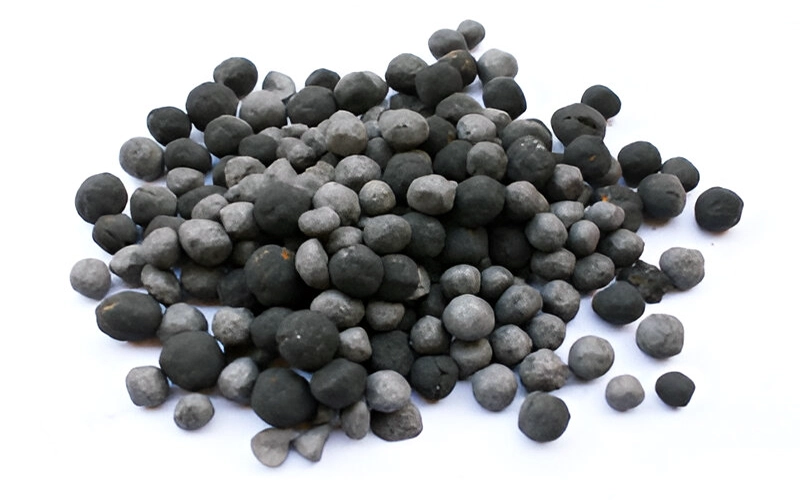Sponge iron, also known as Direct Reduced Iron (DRI), is a metallic product derived from the direct reduction of iron ore in its solid state. Unlike traditional blast furnace methods that use molten phases, sponge iron is produced without melting the ore, making it an energy-efficient and environmentally friendly alternative in ironmaking. The name “sponge iron” comes from its porous, sponge-like appearance due to the removal of oxygen from the ore.
The production of sponge iron involves using reducing agents like natural gas or non-coking coal to remove oxygen from iron ore (usually in the form of pellets or lumps). This reduction takes place in a rotary kiln or a shaft furnace at temperatures ranging from 800°C to 1,200°C. The resulting product consists primarily of metallic iron, with some residual gangue and unreduced iron oxide.
One of the primary advantages of sponge iron is its high iron content and uniform quality, making it an excellent feedstock for electric arc furnaces (EAF) and induction furnaces. It serves as a viable substitute for scrap steel, especially in regions where scrap availability is limited or quality is inconsistent. The use of sponge iron in steelmaking allows better control over the chemical composition of the final product, leading to improved quality.
Sponge iron has gained significant popularity in developing countries due to its lower capital investment requirements and its suitability for small- to medium-scale steel plants. It is extensively used in the production of long steel products such as rebars, wire rods, and structural sections. Additionally, it supports energy conservation and lower emissions compared to traditional ironmaking routes.
The quality of sponge iron depends on several factors, including the type of iron ore used, the reduction process, and operational parameters. Key quality indicators include metallization rate, carbon content, and gangue composition. Proper handling and storage are essential to prevent re-oxidation or spontaneous combustion, which can occur due to its high surface area and reactivity.
.

From an environmental perspective, sponge iron production emits less carbon dioxide and consumes less water compared to blast furnace methods. It aligns well with sustainable steelmaking practices and the global shift toward greener technologies.
In summary, sponge iron is a crucial raw material in modern steelmaking. Its advantages in cost, quality, and environmental impact make it an increasingly important component in the steel industry’s efforts to enhance efficiency and sustainability.
Sponge Iron is one of the most important and basic raw materials required for the production of various steel/iron-based products like TMT bars, D.I. pipes, etc. Sponge Iron is a part–substitute for steel scrap used for manufacturing steel by electrical arc furnaces and induction furnaces. Steel melting scrap is primarily required for use as a feed material in all mini steel plants that use this scrap for melting in electric arc furnace/induction furnace to manufacture steel. Sponge Iron is also good suitable material for use as a coolant in LD converters of the Integrated Steel Plants.

| Element | Al2O3 | SiO2 | P | S | C | Metallization | Metallic Iron (M.Fe) | Total Iron (T.Fe) |
|---|---|---|---|---|---|---|---|---|
| Percent | 0.56 max | 4.5 max | 0.14 max | 0.003 max | 1.3 max | 92 max | 80.6 max | 88.6 max |